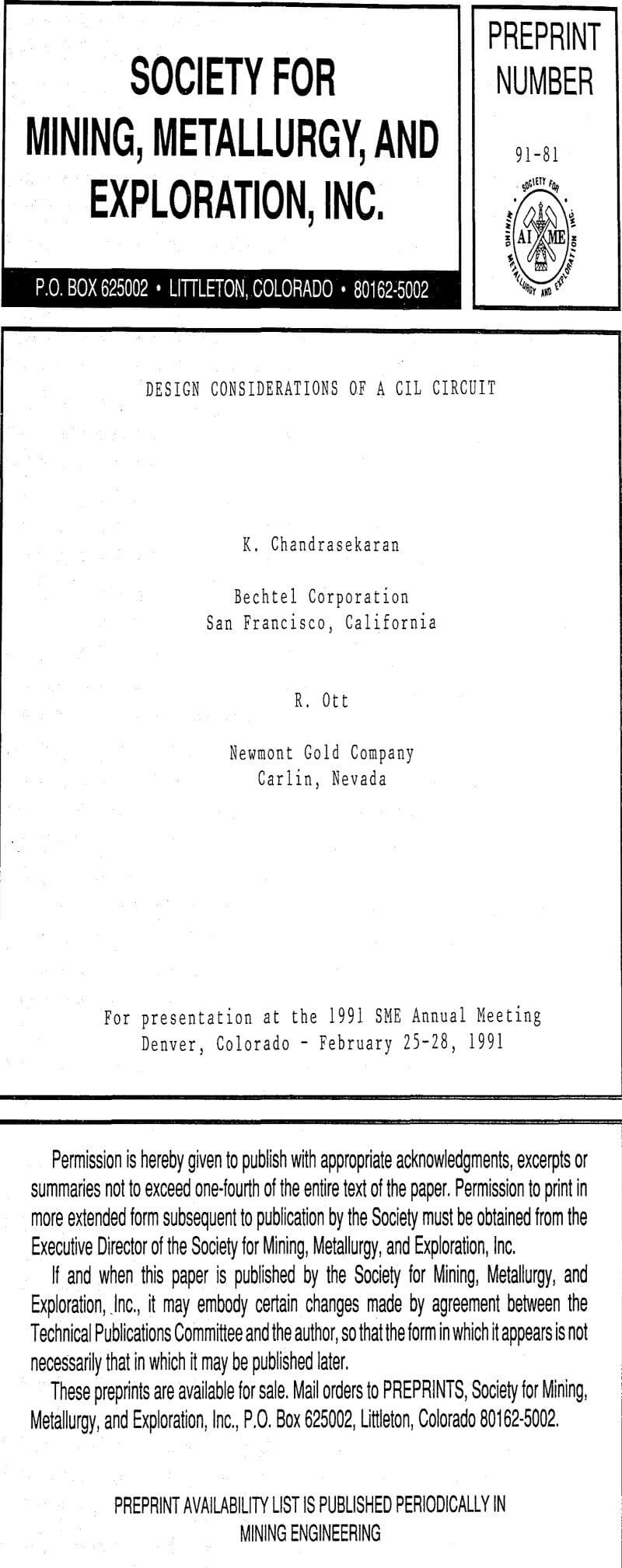Table of Contents
Carbon-in-Leach (CIL) is conventionally used in gold processing operations when preg robbing components are present in the ore. CIL process is becoming attractive even in other situations when preg robbing is not a factor. This paper discusses the situations in which the CIL circuit can be applied.
CIP or CIL
Conventionally, a carbon-in-leach (CIL) circuit is chosen for gold processing operations when preg robbing components are present. The preg robbing components can either be fine clays or naturally occurring carbon within the ore. If a carbon-in-pulp (CIP) circuit were to be utilized for the processing of ore containing preg robbing components, then part of the gold dissolved in the leaching stage will be adsorbed by the carbon or clays present in the ore and result in gold losses to tailings.
Recently, there has been a deviation from this approach. The CIL process has been applied in situations where preg robbing components are not present and preg robbing is not a factor. With short leach times, the CIL application becomes more attractive. Another factor in favor of the CIL process is that it does not require two sets of equipment, one for leaching and another for carbon adsorption. Since the CIL process combines two stages into one, there is considerable savings of capital costs.
Design Considerations for a CIL Circuit at Mill No. 4
A surge tank was installed to minimize upset feed conditions to the thickener just after grinding and classification. The installation of such tankage also has the advantage of reducing production losses as the CIL circuit can continue to operate when problems in the grinding circuit would otherwise force the shutdown of the entire plant.
It is possible to operate a CIL circuit without a thickener, but when doing so operating flexibility suffers. There are some instances where the leach circuits are designed without thickeners. If it is determined that the ore is not particularly grind dependent and that a coarse grind product is acceptable, it may be possible to classify at a sufficiently high per cent solids so as to make the installation of a thickener unnecessary.
The CIL tanks can be installed in such a way that one tank steps down from the preceding tank, if the topography so permits, to take advantage of the natural gradient. If not, the tanks have to be installed in one level. The required hydraulic gradient between two successive tanks amounts to two feet. However, with ore slurries which are thick or which contain a high proportion of clays which increase the viscosity it may be necessary to increase this differential between tanks to three feet in order for the slurry to flow and prevent the tanks from overflowing.
Effective agitation is required in the leach circuit for several reasons. Obviously, agitation is required to properly suspend not only the solids in the slurry but the carbon as well. Oxygen needs to be dispersed throughout the slurry in order to promote the dissolution of gold. The slurry has to be mixed to prevent short circuiting which is of particular importance when the plant is operated with two parallel trains of four tanks rather than the single train of eight.
In addition the vibrating screen does not have the wiper blades and agitator as needed with the other two types of screens nor requires the power of compressed air to sweep the surface clean of plugged solids. A provision was kept in the design to provide for the installation of a second set of screens in case problems were encountered at the higher throughput rates.
The carbon advance in the CIL circuit can be either continuous or intermittent in nature. Unless the feed grade is high, an intermittent advance would suffice. The carbon advance from each CIL stage to the preceding stage is accomplished by recessed impeller pumps to reduce carbon attrition. The advance takes place from each CIL stage to the next stage simultaneously through the use of a timer. The advance timing and duration can be preset.
